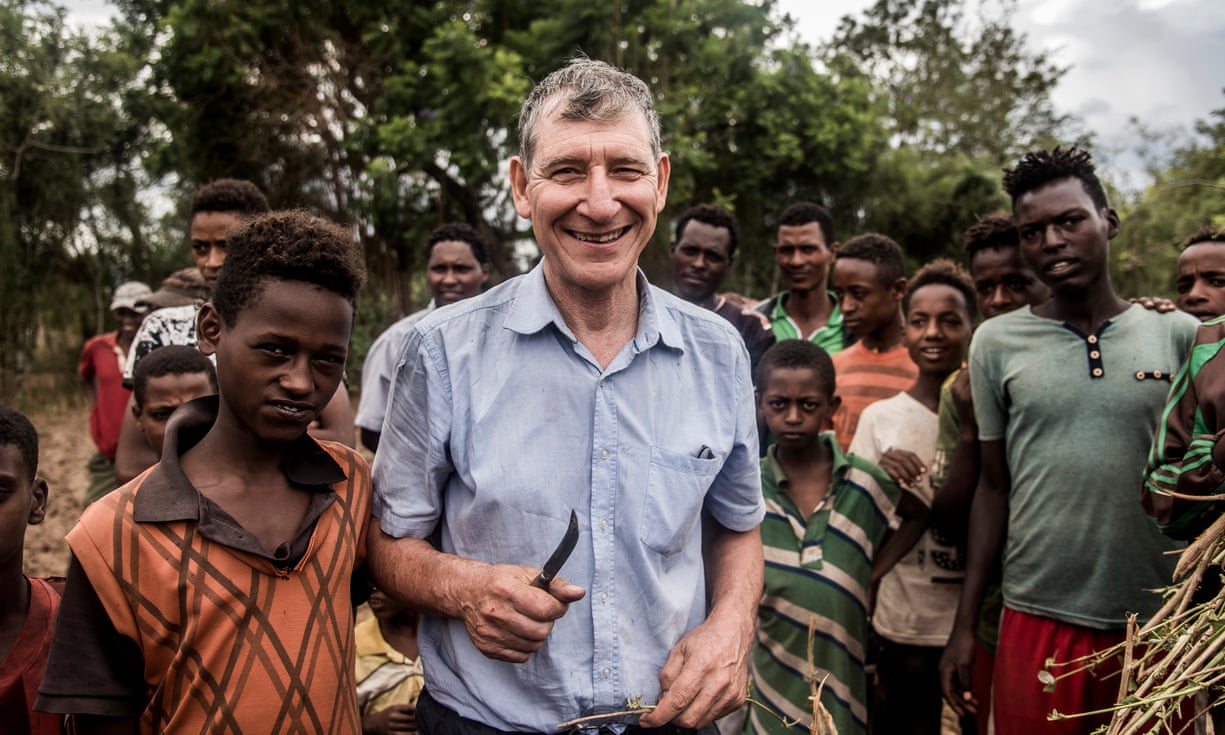Unknown Quantity
Member

Reforesting the world: the Australian farmer with 240m trees to his name
Tony Rinaudo’s regeneration technique, developed in west Africa 30 years ago, has helped bring back forest over 6m hectares
Through the cacophony of the UN’s global climate talks, an Australian farmer is quietly spreading his plan to reforest the world.
Over more than 30 years in west Africa, Tony Rinaudo has regenerated more than 6m hectares – an area nearly as large as Tasmania. His farmer-managed natural regeneration technique is responsible for 240m trees regrowing across that parched continent.
But it very nearly never happened.
Having grown up in Myrtleford, in country Victoria, Rinaudo moved to Niger, one of the world’s poorest countries, in 1981, inspired by his Christian faith and a desire “somewhere, somehow to make a difference”. But after two years of intense tree-planting and trying to coax some life from the arid landscape regularly devastated by severe drought, he despaired.
“I was in charge of a reforestation project that was failing miserably, it wasn’t that I was particularly dumb, it was the same story all over west Africa. And I remember the frustration that just hit me: north, south, east, west, was a barren landscape, and I knew perfectly well that 80 or 90% of the trees I was carrying [in my car] for planting would die.”
But this day, crouching in the sand to reduce his tyres’ air pressure, he looked more closely at the few low desert bushes scattered around the landscape, the only thing that would grow there.
Rinaudo knew they were not small bushes, but trees that had been hacked down. Looking more closely, he realised that, if pruned and allowed to grow, they stood a chance of flourishing.
“In that moment, everything changed. We didn’t need to plant trees, it wasn’t a question of having a multi-million dollar budget and years to do it, everything you needed was in the ground.”
The root system of the chopped down trees remained alive under the ground – Rinaudo describes it as an “underground forest” – it just needed to be pruned and allowed to grow.
“Nature would heal itself, you just needed to stop hammering it.”
Thirty years on, his technique – he describes it as akin to pruning a grape vine back to just one or two stems each season – has a name, farmer-managed natural regeneration (FMNR). It is, Rinaudo says, an “embarrassingly simple solution” to what appeared to be an intractable problem. But it involved overturning generations of accepted wisdom, and a resistance to giving some land back to nature.

^Australian agronomist Tony Rinaudo receives the Right Livelihood Award at a ceremony in the Vasa Museum in Stockholm. Photograph: Tt News Agency/Reuters
“When you’ve got people who are on the edge of starvation every year, not just in famine years, you’ve got this perception that you need every square inch of farmland to grow food crops. And here’s this nut telling people they should sacrifice some of their land for trees.”
Rinaudo – known then as “the crazy white farmer” – managed to convince 10 farmers in as many villages to back his plan, to allow trees to regrow across the land they’d been intensively farming for decades. A drought was the catalyst for a work-for-food program, which brought reluctant farmers into the fold, but when the farming yields were, at first, no worse, then better, then dramatically so, the new technique took off.
Thirty years on, 6m hectares of land have been regenerated under FMNR, totalling 240m trees. The reforestation of the landscape can be seen on satellite images from space.
At the UN’s global climate talks in Katowice, Poland, this week – as thousands of delegates from all over the world debated the minutiae of a complex worldwide rulebook for climate change – Rinaudo quietly took his farming message from meeting room to meeting room, delegation to delegation.
The trees, Rinaudo says, improve farming yields, reduce ground temperatures and hold water in the soil. They provide firewood and make farming, in places where the temperature regularly reaches 40C, more comfortable. But the trees also act, Rinaudo says, as a powerful carbon sink, and with the potential to draw in billions more tonnes of carbon.
For his work on regeneration, Rinaudo was recognised this year in the Right Livelihood Awards, often described as the alternative Nobel, and focused on fields such as environmental protection, human rights, sustainability and peace.
Working with World Vision, Rinaudo has taken his technique across the world, from arid Somaliland to tropical East Timor.
There are 2bn hectares of degraded land in the world, he argues, and much of that land can be restored to help pull carbon from the atmosphere. Regeneration is not the silver bullet for climate change – no such thing exists – but it could be a powerful tool to assist.
“We can do this very cheaply, we can do this very quickly, and we can do this at scale.”
https://www.theguardian.com/environment/2018/dec/14/reforesting-world-australian-farmer-240m-trees
He's the type of person that's saving our planet, a real hero. If we can get similar schemes all over the planet, future generations might not hate us. Thanks Captain Planet.
Didn't see the story, groot me if old.
